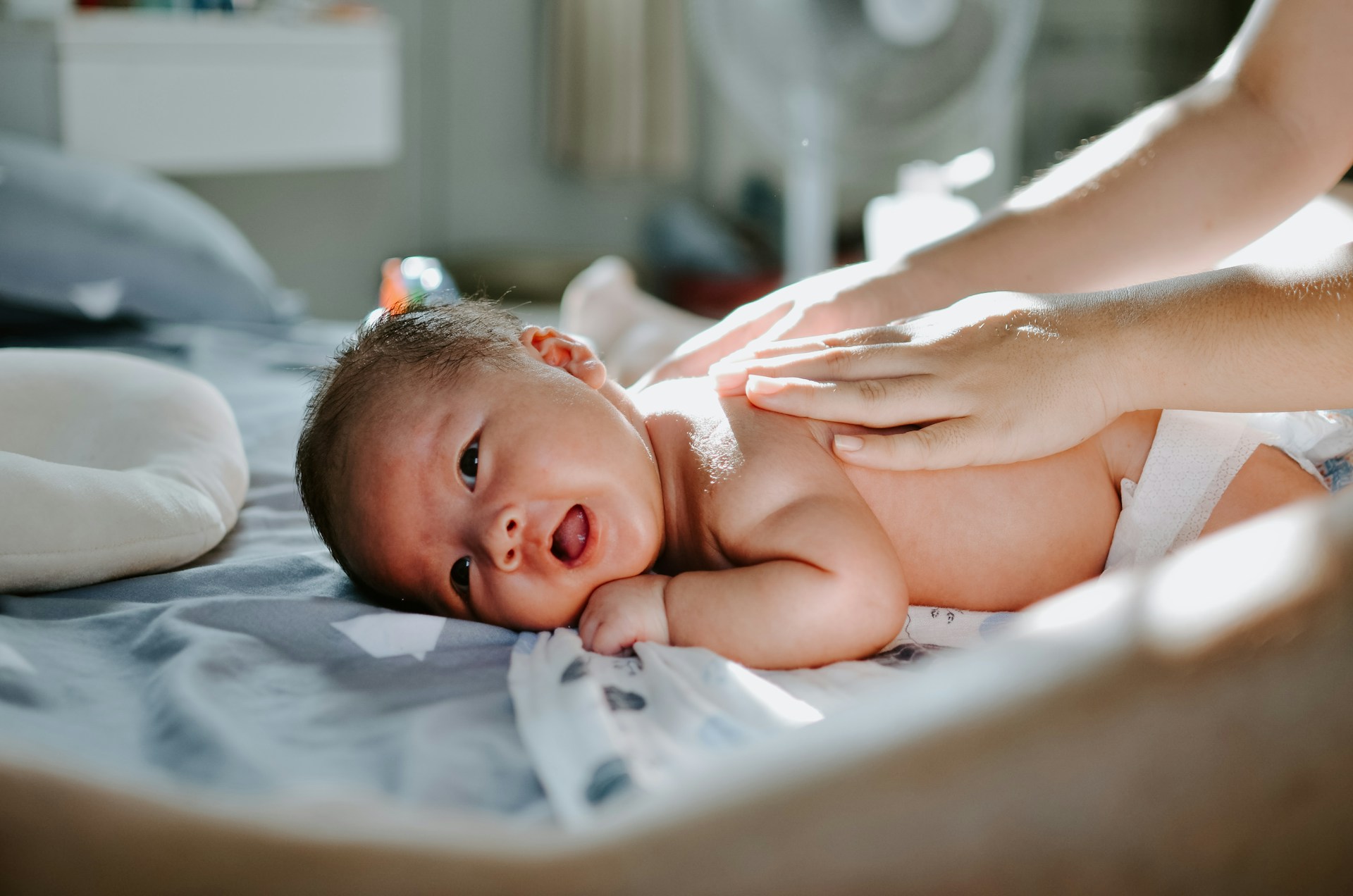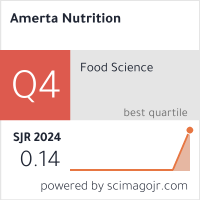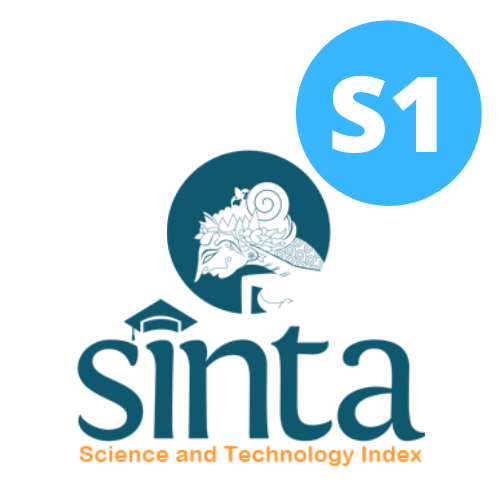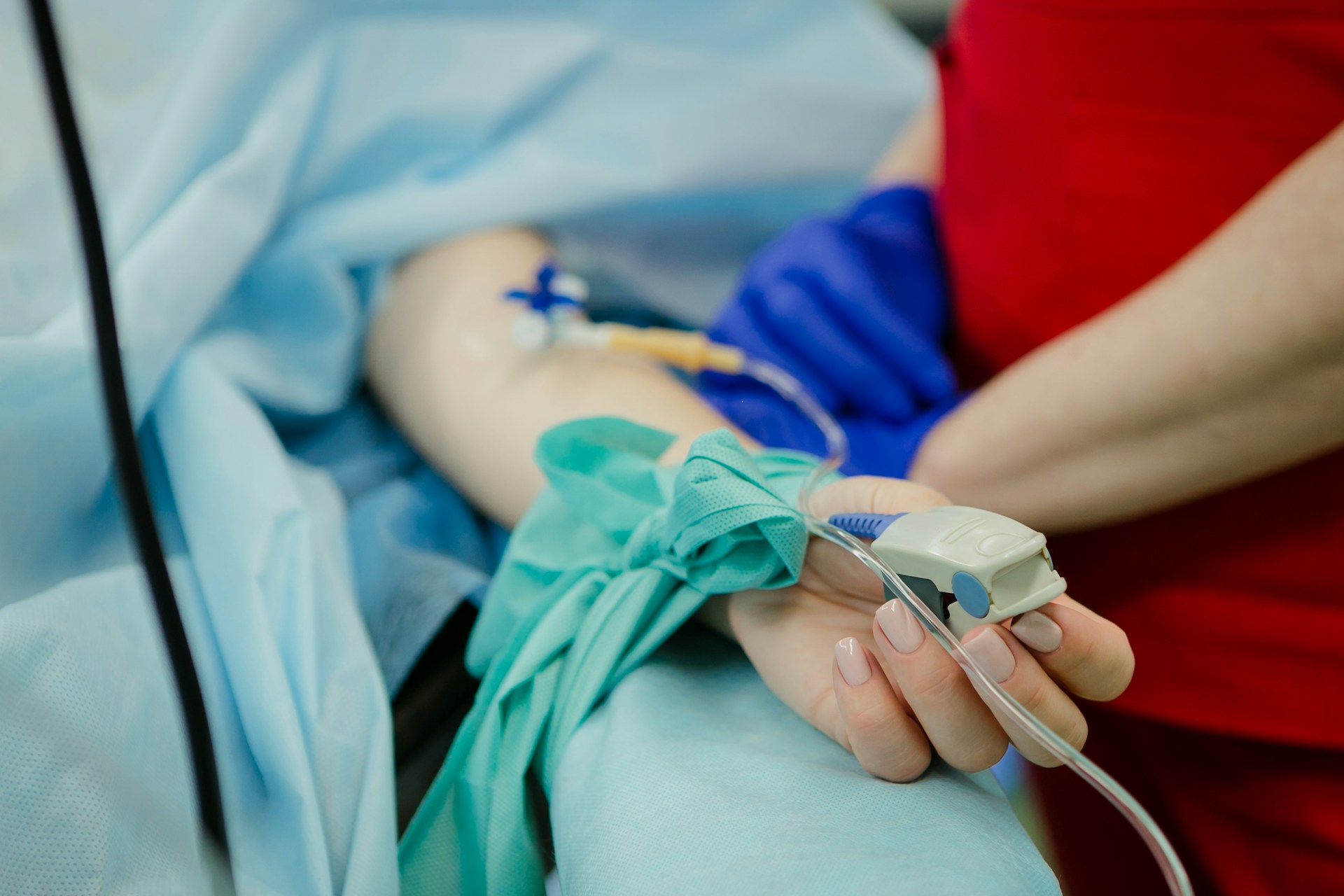Analysis of Maternal Factors with the Incidence of LBW Infants at Situbondo Health Center: Study of Cohort Register Data in 2020
Analisa Faktor Ibu dengan Kejadian Bayi BBLR di Puskesmas Situbondo: Studi Data Register Kohort Tahun 2020

Downloads
Background: Infant mortality rate (IMR), especially in the perinatal period, is caused by the condition of low-birth-weight babies (LBW). The nutritional and health conditions of pregnant women play an important role in determining the nutritional status of infants starting during pregnancy. Maternal factors are one of the causes of LBW in infants.
Objectives: Analyzing maternal factors (parity, Hemoglobin (Hb) level of the mother during pregnancy, age of the mother during pregnancy, nutritional status of the mother during pregnancy (chronic energy deficiency = KEK), and the distance between pregnancies that cause the incidence of LBW babies at the Situbondo Health Center in 2020.
Methods: The case-control method was used in this study by using cohort register data at the Situbondo Health Center. In March 2022, data were collected from 82 mothers including 41 mothers of LBW babies as a case group and 41 mothers of the control group who did not have LBW babies. Data were analyzed using chi-square test.
Results: The results proved that maternal hemoglobin level was associated with the incidence of LBW babies (p=0.026; OR=3.088; 95%; CI=1.240-7.692). However, the variables of parity, maternal age during pregnancy, maternal nutritional status (SEZ), and pregnancy distance were not associated with the incidence of LBW babies.
Conclusions: Low Hb levels in pregnant women have a higher risk of delivering LBW babies. It is recommended that pregnancy checks be carried out by pregnant women regularly at least 6 visits to health facilities and it is recommended to take blood supplement tablets regularly, eat healthy foods and do not believe in myths that are detrimental to the health of pregnant women.
INTRODUCTION
A condition of a baby at birth with a weight of <2,500 g is called a BBLR baby1. One of the indicators of child health is BBLR, where BBLR is an important factor for life, growth, and development in the future2. Every year, the number of Infant Mortality Rate (IMR) cases always increases. In this regard, Indonesia is still facing the problem of infant mortality, especially those that occur during the perinatal period caused by LBW3.
Babies with LBW have a high risk of death and during childhood, there will be obstacles to their growth and development, when compared to those who do not experience LBW4;5. A well-prepared pregnancy with a prime nutritional and health status is essential for the nutritional condition of the baby, especially while still in the womb. If a pregnant woman is malnourished, it can cause abortion, infant death, anemia, genetic defects, miscarriage, stillbirth, and birth with low birth weight6. Babies who are born with low birth weight and still survive with inadequate nutritional intake due to family inability can have an impact on the child's growth disorders, namely stunting7.
Factors that influence the birth of babies with LBW include, first, maternal and paternal factors such as area of residence, economic status, age, education, marital status, and the number of live/stillbirths. Second, neonatal factors, namely the gender identity of the baby. Third, health services factors such as visits for pregnancy check-ups or Antenatal Care (ANC), iron consumption, location of delivery8. LBW cases are also influenced by gestational age, chronic diseases, pregnancy spacing, and nutritional status9. Other causal factors mentioned by Hartiningrum and Fitriyah (2019) anemia affects the increase in the prevalence of LBW in Situbondo Regency5.
The age of pregnant women is a factor that influences the occurrence of LBW. Age 20-35 years is considered a good reproductive age for women, if less than or more than the age of 20-35 years can affect the increased risk of pregnancy and the risk of childbirth10. Parity has a risk of 68.2% in giving birth to LBW. Poor parity is a parity condition of 1 and >3. Pregnant women with maternal hemoglobin levels <11 g/dL are at risk of giving birth to babies with LBW. Anemia can cause obstacles in the transport of oxygen so that nutrition for the fetus is reduced11.
The prevalence of LBW in East Java Province is 3.9%, whereas out of 38 regencies or cities, the prevalence of LBW in Situbondo Regency is in the second highest position with a percentage of 7.4%12. Infant mortality in Situbondo Regency in 2019 was caused by LBW and is still the highest cause with 62 cases of death or 45.6%13. Based on the results of data obtained during a preliminary study at the Situbondo Regency Health Office, the percentage of LBW cases at the Situbondo Health Center in 2020 was ranked second at 7.4% of 652 LBW cases in Situbondo Regency. Where previously in 2019 the percentage of LBW cases at the Situbondo Health Center was 7.2% of 673 LBW cases in Situbondo Regency. This study aims to analyze the variables of parity (1 and >3), maternal Hb levels (<11 g/dL), maternal age (<20 years and >35 years), maternal KEK status during pregnancy (<23.5 cm), pregnancy spacing (<2 years) associated with the incidence of LBW babies at the Situbondo Health Center in 2020.
METHODS
Quantitative research with a case-control design was conducted in March 2022 at the Situbondo Health Center which has a working area of 6 (six) villages, namely Patokan, Dawuhan, Olean, Talkandang, Kotakan, and Kalibagor. The subjects of the study were all members of the case population who met the exclusion and inclusion criteria. Out of 49 LBW babies born and recorded in the Situbondo Regency Cohort Register in 2020, 8 babies were not included in the inclusion criteria. The sample in the study was 82 mothers, 41 mothers who had babies with LBW as the case group, and 41 mothers of babies who were not LBW as the control group. The selected sample with inclusion criteria in the form of data on the cohort register is filled in, single pregnancy, live birth babies, and babies who do not experience congenital defects and abnormalities while the exclusion criteria include the incomplete cohort register of babies born and Gemelli (twins). The ratio of cases and controls is 1:1 with a total of 82 subjects born out of 664 babies born at the Situbondo Health Center. The variables of this study are parity, maternal Hb levels, maternal age during pregnancy, maternal KEK status, interpregnancy intervals, and LBW infant status. Secondary data validity was carried out by looking at the completeness of the cohort register of babies born. The secondary data came from monthly reports from village midwives to the health center through the holder of the KIA (Maternal and Child Health) program. The health center will validate data from the village midwife by tracking cases. Furthermore, the health center will submit a data report to the health office. The Chi-Square test was used to analyze the correlation between variables. Ethical feasibility research published by the Health Research Ethics Commission of the Faculty of Dentistry, University of Jember No. 1496/UN25.8/KEPK/DL/2002.
RESULTS AND DISCUSSIONS
Relationship between Maternal Factors (Parity, Maternal
WHO. Global Nutrition Targets 2025: Low Birth Weight Policy Brief. (World Health Organization, 2014).
Putri, A. W., Pratitis, A., Luthfiya, L., Wahyuni, S. & Tarmali, A. Faktor Ibu terhadap Kejadian Bayi Berat Lahir Rendah. HIGEIA 3, 55–62 (2019).
Haryanti, S. Y., Pangestuti, D. R. & Kartini, A. Anemia dan KEK pada Ibu Hamil sebagai Faktor Risiko Kejadian Bayi Berat Lahir Rendah (BBLR) (Studi di Wilayah Kerja Puskesmas Juwana Kabupaten Pati). Jurnal Kesehatan Masyarakat 7, 322–329 (2019).
Rajashree, K., Prashanth, H. & Revathy, R. Study on the factors associated with low birth weight among newborns delivered in a tertiary-care hospital, Shimoga, Karnataka. Int J Med Sci Public Health 4, 1287 (2015).
Hartiningrum, I. & Fitriyah, N. Bayi Berat Lahir Rendah (BBLR) di Provinsi Jawa Timur Tahun 2012-2016. JBK 7, 97–104 (2019).
Adriani, M. Peran Gizi Dalam Siklus Kehidupan. (Kencana Prenadamedia Group, 2016).
Simbolon, D. Berat Lahir dan Kelangsungan Hidup Neonatal di Indonesia. Kesmas: National Public Health Journal 7, 8–15 (2012).
Sitoayu, L. & Rumana, N. A. Faktor Determinan Kejadian Berat Bayi Lahir Rendah (BBLR) Pada Remaja Di Asia Selatan Dan Asia Tenggara Tahun 2005 – 2014 (Analisis Dengan Metode Structural Equation Model). Jurnal INOHIM 5, 9 (2017).
Nur, R., A. Arifuddin, dan R. Novilia. 2016. Analisis Faktor Risiko Kejadian Berat Badan Lahir Rendah di Rumah Sakit Umum Anutapura Palu. Jurnal Preventif.7(1):29–42.
Putri, A. W., A. Pratitis, L. Luthfiya, S. Wahyuni, dan A. Tarmali. 2019. Faktor ibu terhadap kejadian bayi berat lahir rendah. HIGEIA. 3(1):55–62.
Novianti, S. dan I. S. Aisyah. 2018. Hubungan Anemia Pada Ibu Hamil dan BBLR. Jurnal Siliwangi. 4(1):6–8.
Dinas Kesehatan Provinsi Jawa Timur. Profil Kesehatan Provinsi Jawa Timur. (Dinas Kesehatan Provinsi Jawa Timur, 2019).
Dinas Kesehatan Kabupaten Situbondo. Profil Kesehatan Kab. Situbondo Tahun 2019. (Dinas Kesehatan Kabupaten Situbondo, 2019).
Nappu, S., Akri, Y. J. & Suhartik. Hubungan Paritas dan Usia Ibu dengan Kejadian BBLR di RS Ben Mari Malang. Jurnal Ilmiah Obstetri Gynekologi dan Ilmu Kesehatan 7, 32–42 (2019).
Sujianti. Hubungan Usia Ibu Dengan Kejadian Bayi Berat Lahir Rendah (BBLR) di RSUD Cilacap. Jurnal Kesehatan Al-Irsyad 11, 62–67 (2018).
Rahfiludin, M. Z., Haryanto, C. P. & Pradigdo, S. F. Faktor – Faktor Yang Berhubungan Dengan Kejadian Berat Badan Lahir Rendah (BBLR) Di Kabupaten Kudus (Studi di Wilayah Kerja Puskesmas Undaan Kecamatan Undaan Kabupaten Kudus Tahun 2015). Jurnal Kesehatan Masyarakat 5, 322–331 (2017).
Lestari, R. D., Ulfa, I. M. & Mariyam, S. Hubungan Umur, Paritas, Dan Preeklampsia Dengan Kejadian Berat Badan Lahir Rendah Di Rsud Dr. H. Moch. Ansari Saleh Banjarmasin. Dinamika Kesehatan 6, 12 (2015).
Susanto, Y. & Darto, J. Hubungan Antara Anemia Dan Usia Ibu Terhadap Kejadian Bayi Berat Lahir Rendah Di RSUD Labuang Baji Makassar 2019. JKDPelamonia 3, 124–129 (2020).
Kusumawati, D. D. & Septiyaningsih, R. Hubungan Paritas dengan Kejadian BBLR di RSUD Cilacap Tahun 2014. Jurnal MID-Z 3, 7–9 (2020).
Hariyadi, D., Ichtiyati, F. & Marlenyati. Faktor-Faktor Yang Mempengaruhi Kejadian BBLR di RSUD Dr. Soedarso Pontianak. Jurnal Vokasi Kesehatan 1, 154–160 (2015).
Evasari, E. & Nurmala, E. Hubungan Umur, Paritas dan Status Gizi Ibu dengan Kejadian BBLR. Jurnal Obstretika Scientia 4, 453–471 (2017).
Apriani, E., Subandi, A. & Mubarok, A. K. Hubungan Usia Ibu Hamil, Paritas dan Usia Kehamilan dengan Kejadian BBLR di RSUD Cilacap. Trends Of Nursing Science 2, 45–52 (2021).
Kurniati, E., Kolifah & Novita, M. Hubungan Paritas Dengan Berat Badan Lahir Rendah Di Wilayah Kerja Puskesmas Bareng Kabupaten Jombang Tahun 2012. Jurnal Metabolisme 2, 1–5 (2013).
Putri, N. T. & Rifdi, F. Faktor Yang Berhubungan Dengan Kejadian Berat Badan Lahir Rendah. VoM 11, 66–79 (2022).
Suparyanto. Berat Bayi Lahir. (EGC, 2012).
Monita, F., Suhaimi, D. & Ernalia, Y. Hubungan Usia, Jarak Kelahiran Dan Kadar Hemoglobin Ibu Hamil Dengan Kejadian Berat Bayi Lahir Rendah Di RSUD Arifin Achmad Provinsi Riau. Jom FK 3, 1–17 (2016).
Kartini, K. Risiko Penyakit Infeksi terhadap Kejadian Kekurangan Energi Kronik (KEK) pada Ibu Hami di Puskesmas Mekar Kota Kendari. HIJP 9, 10–14 (2017).
Suindri, N. N. & Mauliku, J. Hubungan Kurang Energi Kronik Pada Ibu Hamil Dengan Bayi Berat Lahir Rendah. Infokes 11, 360–366 (2021).
Herwati, M., Prastika, D. A. & Martanti, L. E. Hubungan Antara Status Gizi Ibu Hamil Dengan Berat Badan Bayi Lahir. Jurnal Sains Kebidanan 3, 67–73 (2021).
Nurani, N. N., Suindri, N. N. & Erawati, N. L. P. S. Hubungan LILA dan Umur Ibu Hamil dengan Kejadian Bayi Berat Badan Lahir Rendah di Wilayah Kerja Puskesmas Blahbatu I Tahun 2010 Sampai Dengan Tahun 2012. Jurnal Ilmu Kebidanan 3, 19–29 (2016).
Khulafa’ur R, L., Amnah, R. & P, B. Hubungan Status Gizi Ibu Hamil Dengan Bayi Berat Badan Lahir Rendah ( Bblr ) Di Rsud Gambiran Kota Kediri. j.kebidanan 4, 1–7 (2019).
Kemenkes RI. Pegangan Fasilitator Kelas Ibu Hamil. (Kementerian Kesehatan RI, 2019).
Nurani, N. N., Suindri, N. N. & Erawati, N. L. P. S. Hubungan LILA dan Umur Ibu Hamil dengan Kejadian Bayi Berat Badan Lahir Rendah di Wilayah Kerja Puskesmas Blahbatu I Tahun 2010 Sampai Dengan Tahun 2012. Jurnal Ilmu Kebidanan 3, 19–29 (2016).
Solihah, I. A. & Nurhasanah, S. Hubungan Riwayat Kekurangan Energi Kronik (KEK) Selama Masa Kehamilan Dengan Kejadian BBLR Di Wilayah Kerja Puskesmas Cipendeuy Tahun 2018. Jurnal Kesehatan Aeromedika 5, 89–94 (2019).
Kristianasari. Gizi Ibu Hamil. (Nuha Medika, 2010).
Agustin, A. D. & Afrika, E. Faktor-Faktor Yang Berhubungan Dengan Kejadian Berat Badan Lahir Rendah (Bblr) Di Wilayah Kerja Puskesmas Muara Burnai. Jurnal Kesehatan Masyarakat 6, 1042–1049 (2022)
Fitriany, J. & Saputri, A. I. Anemia Defisiensi Besi. AVERROUS 4, 1–14 (2018).
Novianti, S. & Aisyah, I. S. Hubungan Anemia Pada Ibu Hamil Dan BBLR. Jurnal Siliwangi 4, 6–8 (2018).
Agustin, A. D. & Afrika, E. Faktor-Faktor Yang Berhubungan Dengan Kejadian Berat Badan Lahir Rendah (Bblr) Di Wilayah Kerja Puskesmas Muara Burnai. Jurnal Kesehatan Masyarakat 6, 1042–1049 (2022).
Khatimah, H., Setiawati, D. & Haruna, N. Hubungan Faktor Risiko Kejadian Anemia pada Ibu Hamil Trimester Ketiga. UMI Medical Journal 7, 10–19 (2022).
Nurmasari, V. & Sumarmi, S. Hubungan Keteraturan Kunjungan Antenatal Care dan Kepatuhan Konsumsi Tablet Fe dengan Kejadian Anemia pada Ibu Hamil Trimester III di Kecamatan Maron Probolinggo. Amerta Nutr 3, 46–51
Yunita, N., Supiyati, S. & Isdiana, E. Faktor-Faktor Yang Mempengaruhi Kepatuhan Ibu Hamil Mengkonsumsi Tablet Zat Besi (Fe) Di Wilayah Kerja Puskesmas Tirtajaya Kecamatan Bajuin Tahun 2018. Jurkessia 8, 148–160 (2018).
Kemenkes RI. Pedoman Pelayanan Antenatal, Persalinan, Nifas dan Bayi Baru Lahir di Era Adaptasi Kebiasaan Baru. (Kementerian Kesehatan RI, 2020).
Yusran, S. & Pratiwi, P. R. Faktor-Faktor Yang Berhubungan Dengan Kejadian Anemia Pada Ibu Hamil di Wilayah Kerja Puskesmas Lepo-Lepo Kota Kendari Tahun 2022. Gizi dan Kesehatan Indonesia 3, 1–6 (2022).
Ningtyias, F. W. & Kurrohman, T. Food taboos and recommended foods for pregnant women: the study of phenomenology in pendhalungan society. IOP Conf. Ser.: Earth Environ. Sci. 485, 1–6 (2020).
Copyright (c) 2024 Amerta Nutrition

This work is licensed under a Creative Commons Attribution-ShareAlike 4.0 International License.
AMERTA NUTR by Unair is licensed under a Creative Commons Attribution-ShareAlike 4.0 International License.
1. The journal allows the author to hold the copyright of the article without restrictions.
2. The journal allows the author(s) to retain publishing rights without restrictions
3. The legal formal aspect of journal publication accessibility refers to Creative Commons Attribution Share-Alike (CC BY-SA).
4. The Creative Commons Attribution Share-Alike (CC BY-SA) license allows re-distribution and re-use of a licensed work on the conditions that the creator is appropriately credited and that any derivative work is made available under "the same, similar or a compatible license”. Other than the conditions mentioned above, the editorial board is not responsible for copyright violation.












































